When it comes to car maintenance, oil filters might seem like a minor detail, but they play a crucial role in engine health. Are you getting the best bang for your buck with aftermarket brands, or is sticking with a genuine Toyota Oil Filter the smarter move? We decided to dive deep and dissect various oil filters, including the Toyota OEM filter, and compare them head-to-head. Let’s see if those “extra guard” or “tough guard” claims from aftermarket brands really hold water, or if the unassuming Toyota filter is the real champion.
We’re putting several popular oil filters to the test, measuring filter media, examining construction, and ultimately determining if paying extra for aftermarket filters truly translates to better engine protection. This isn’t just about brand names; it’s about what’s inside that cylindrical can and how well it safeguards your Toyota’s engine.
Toyota Oil Filter: The Benchmark
First up, the Toyota oil filter, a seemingly simple and affordable option. Right off the bat, you can see it’s taller than the Fram filters we initially compared it against. Size isn’t everything, but in the world of oil filters, it often correlates with more filter media – the stuff that actually cleans your oil.
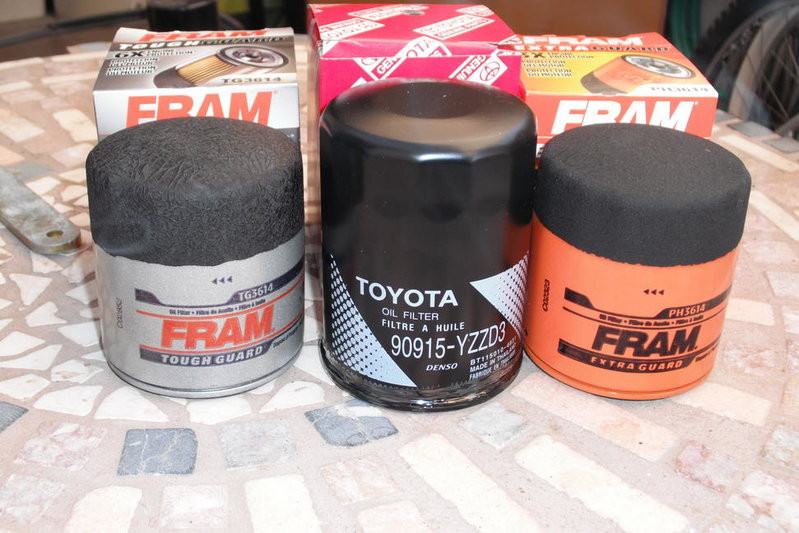 Close-up of Toyota oil filter showing its sealed and pre-lubricated gasket, emphasizing OEM quality.
Close-up of Toyota oil filter showing its sealed and pre-lubricated gasket, emphasizing OEM quality.
One immediate plus for the Toyota filter is that it comes sealed and pre-lubricated. This is a nice touch of convenience and speaks to the attention to detail you expect from an Original Equipment Manufacturer (OEM) part.
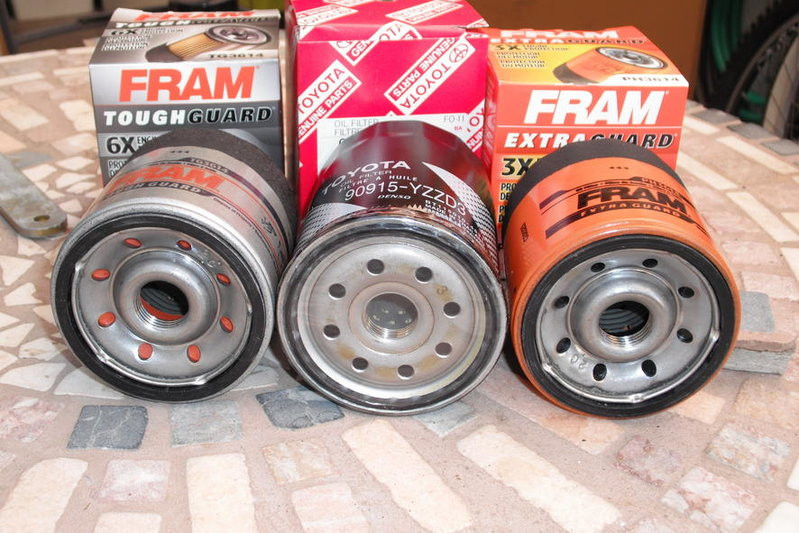 Toyota oil filter alongside Fram filters, showcasing the height difference and build quality.
Toyota oil filter alongside Fram filters, showcasing the height difference and build quality.
But the real test is inside. We measured the filter media, and the Toyota filter boasts a significant 225.9 square inches of media. This dwarfs the Fram “Extra Guard” and “Tough Guard” filters, which both clocked in at only 115.9 square inches. That’s almost double the filtering capacity in the Toyota filter! For a filter that’s often similarly priced to budget aftermarket options, this is a compelling start.
Expanding the Lineup: More Oil Filter Brands Enter the Ring
To broaden our comparison, we added more contenders to the mix, including STP, Bosch, K&N, and Mobil 1 filters. Thanks to contributions that expanded our testing scope, we could assess an even wider range of options.
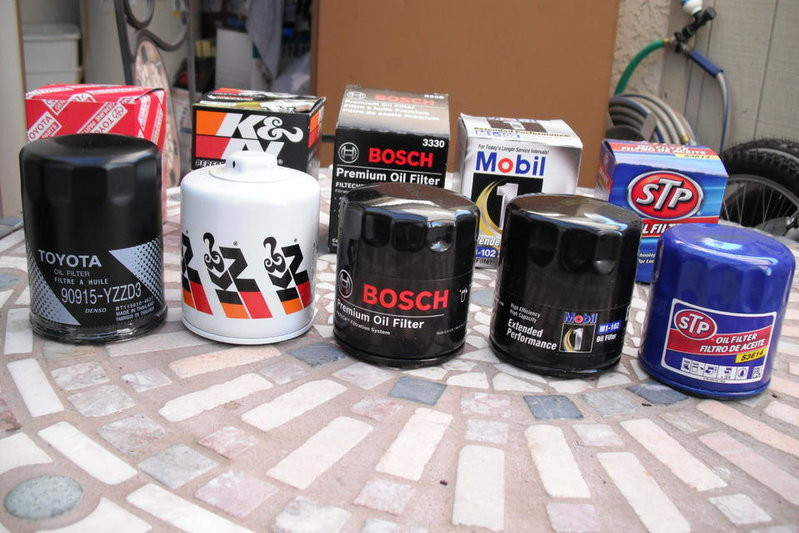 Group shot of various oil filters including Toyota, STP, Bosch, K&N, and Mobil 1, emphasizing the diversity of brands tested.
Group shot of various oil filters including Toyota, STP, Bosch, K&N, and Mobil 1, emphasizing the diversity of brands tested.
As you can see, the Toyota filter maintains its height advantage over many, with the STP filter appearing as the shortest in this group. Let’s delve into each of these and see how they compare in detail.
STP Oil Filter
The STP S3614 filter is positioned as a budget-friendly option, comparable in price to the Fram Extra Guard. At $3.59, it’s certainly easy on the wallet. However, examining its construction reveals cost-saving measures. Unlike many others, the STP filter lacks a steel core and instead uses a plastic ring for support. STP claims 96% efficiency and “20% more dirt holding capacity” than a “nationally advertised brand.” Intriguingly, STP is also the only filter in our test to recommend 3000-mile oil change intervals directly on the carton. In terms of filter media, the STP S3614 offers 108 square inches.
Bosch Oil Filter
Stepping up in price, the Bosch 3330 filter retails around $6.49, putting it in the same ballpark as the Fram Tough Guard. Bosch markets this as a “Premium Filter,” claiming 99.9% removal of “engine oil impurities.” They also advertise “42% more filtering media” and “30% thicker media” compared to “conventional” filters. Despite the thickness claim, we didn’t observe a noticeable difference in media thickness compared to other filters tested. The Bosch 3330 provides 124.9 square inches of filter media.
K&N Premium Oil Filter
The K&N HP-1002 is a premium-priced filter at $13.99. K&N emphasizes engine protection and includes a 1-inch nut on top for easy removal. They claim “99% removal of harmful contaminants.” While the box states a pre-lubed gasket, instructions still advise oiling it before installation – a point of slight inconsistency. The K&N HP-1002 contains 103.6 square inches of filter media.
 K&N Premium Oil Filter packaging and product images, highlighting the brand and features.
K&N Premium Oil Filter packaging and product images, highlighting the brand and features.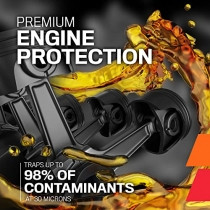 Additional product view of the K&N Premium Oil Filter, showcasing its construction and design.
Additional product view of the K&N Premium Oil Filter, showcasing its construction and design.
Mobil 1 Extended Performance Oil Filter
The Mobil 1 M1-102, priced at $12.99, is another high-end option. Mobil 1 promotes “extended performance” and claims a “multi-pass” efficiency of 99.2% versus 94% for a “leading brand.” Like the K&N, the Mobil 1 box mentions a pre-lubricated gasket, which doesn’t appear to be the case, and instructions still recommend pre-oiling. The Mobil 1 M1-102 offers 103.6 square inches of filter media, exactly the same as the K&N filter. Interestingly, the internal components and base of the K&N and Mobil 1 filters appear virtually identical, even stamped with the same “AA” mark, suggesting a shared manufacturer.
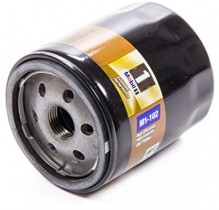 Mobil 1 Extended Performance Oil Filter packaging and product images, emphasizing its premium status.
Mobil 1 Extended Performance Oil Filter packaging and product images, emphasizing its premium status.
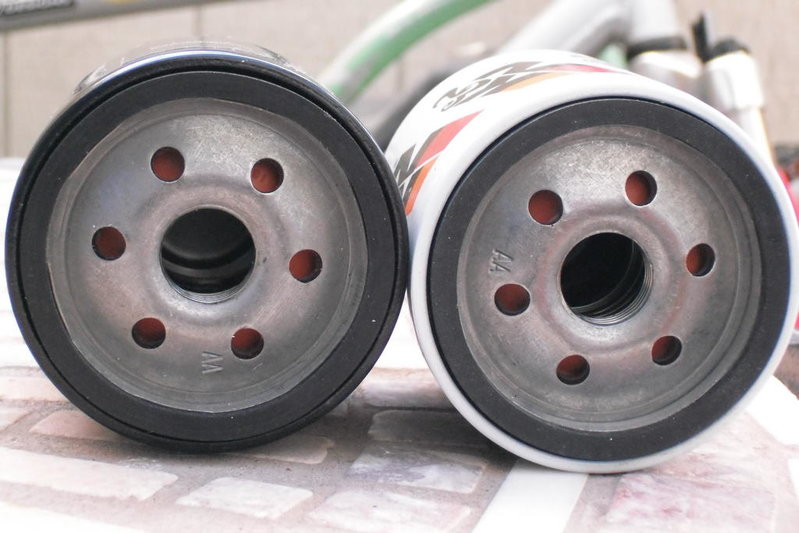 Side-by-side comparison of K&N and Mobil 1 oil filter bases, highlighting their identical appearance and shared markings.
Side-by-side comparison of K&N and Mobil 1 oil filter bases, highlighting their identical appearance and shared markings.
OEM Oil Filter (Aftermarket “OEM OF 1004”)
Next, we examined an aftermarket “OEM” filter, the OF 1004. Made in China, this filter is similar in size to the genuine Toyota filter and contains 134.2 square inches of basic paper filter media. While sealed in plastic, it’s not pre-lubricated.
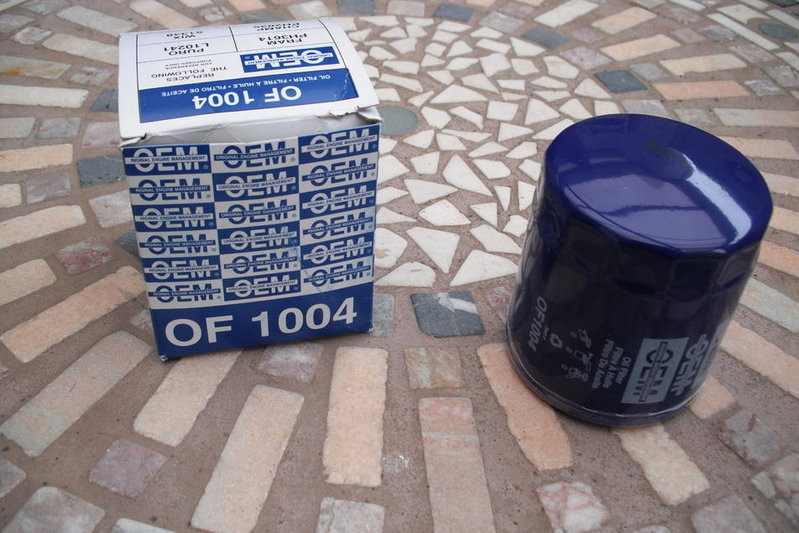 OEM OF 1004 oil filter, showing its packaging and general appearance.
OEM OF 1004 oil filter, showing its packaging and general appearance.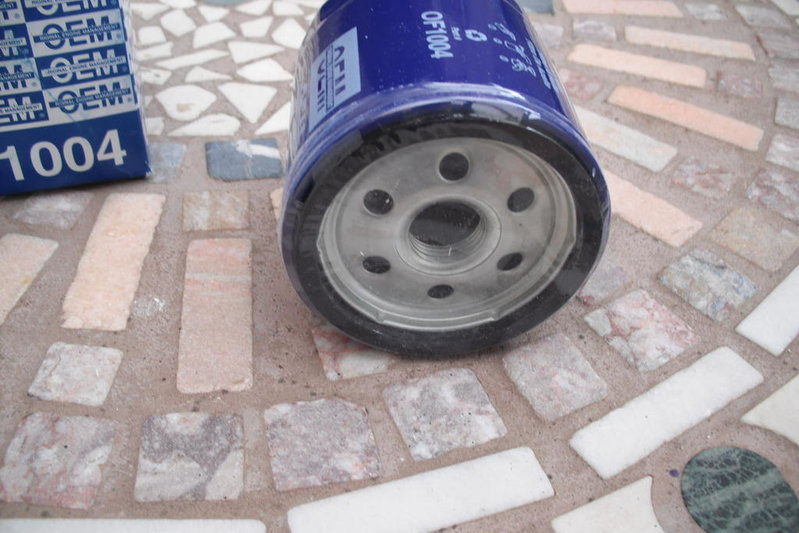 Close-up of the OEM OF 1004 filter's construction, focusing on materials and build quality.
Close-up of the OEM OF 1004 filter's construction, focusing on materials and build quality.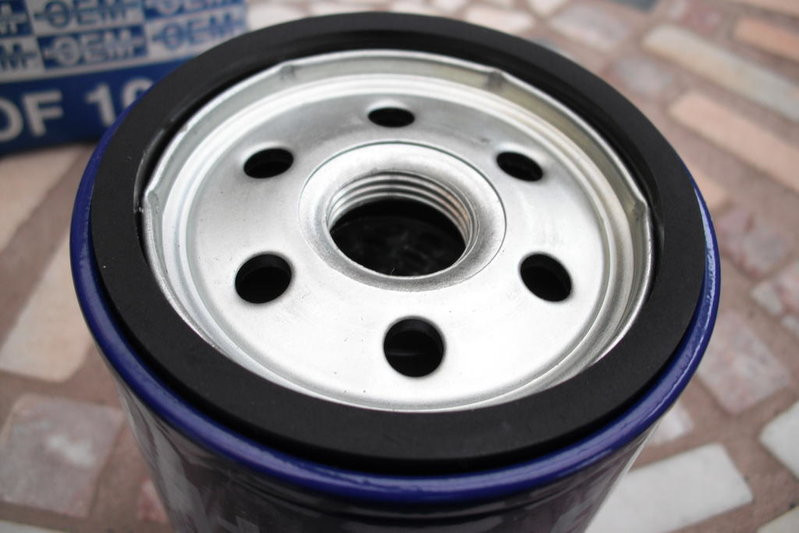 Detailed view of the OEM OF 1004 filter's components, revealing internal design.
Detailed view of the OEM OF 1004 filter's components, revealing internal design.
A primary concern with this filter is its center tube. Although perforated, the holes are notably small. This design could potentially restrict oil flow and increase oil pressure, possibly hindering proper engine lubrication.
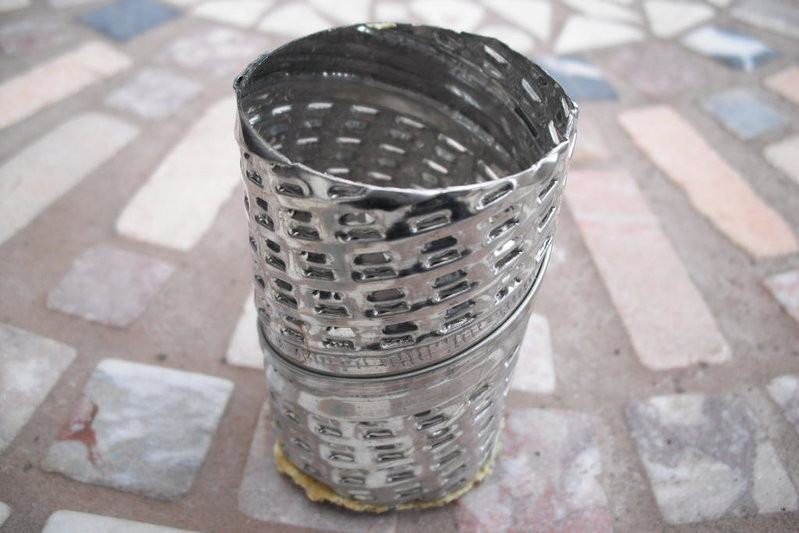 Center tube of the OEM OF 1004 oil filter, highlighting the small perforation holes and potential flow restriction.
Center tube of the OEM OF 1004 oil filter, highlighting the small perforation holes and potential flow restriction. Further view of the OEM OF 1004 center tube, emphasizing the small hole size.
Further view of the OEM OF 1004 center tube, emphasizing the small hole size.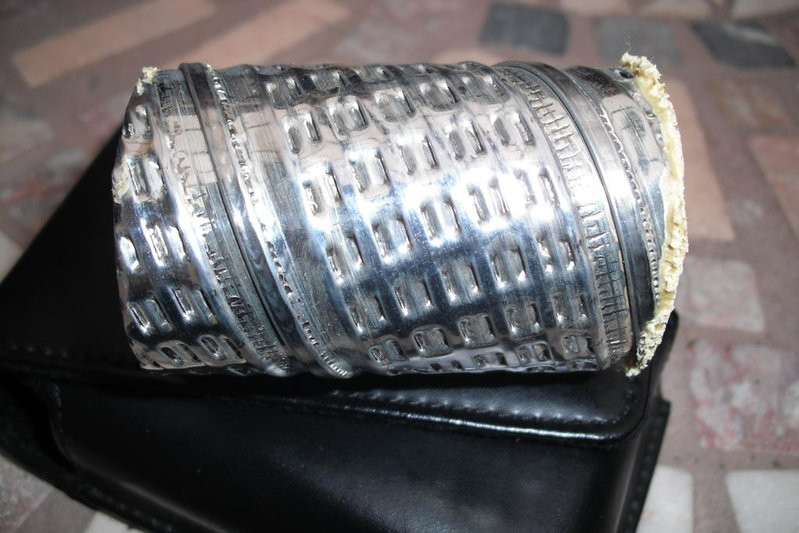 Side profile of the OEM OF 1004 filter, showing overall construction and dimensions.
Side profile of the OEM OF 1004 filter, showing overall construction and dimensions.
MANN Filter
The MANN ML 1003 filter, priced around $2.99, is made in the USA. It’s about 2/3″ shorter than the genuine Toyota filter. The media is paper and provides 121 square inches of surface area.
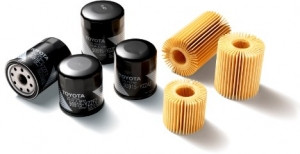 MANN ML 1003 oil filter packaging and product view, showing brand and part number.
MANN ML 1003 oil filter packaging and product view, showing brand and part number.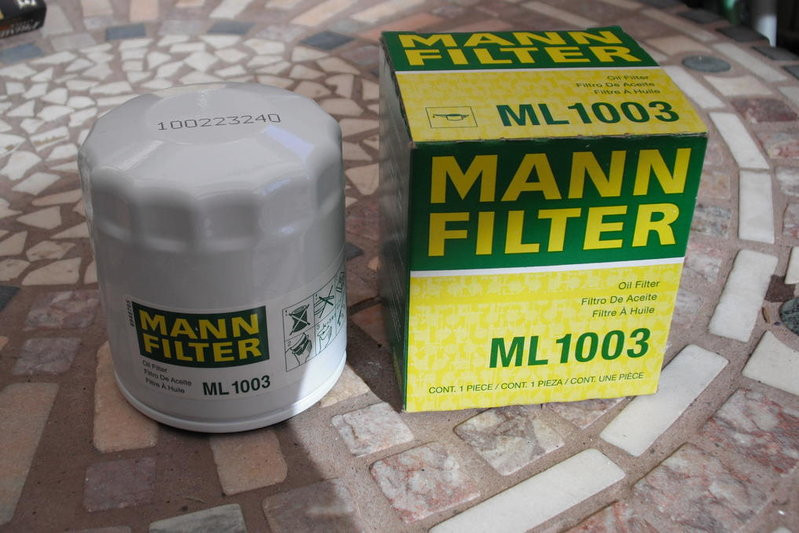 MANN ML 1003 oil filter alongside other filters, showing size comparison.
MANN ML 1003 oil filter alongside other filters, showing size comparison.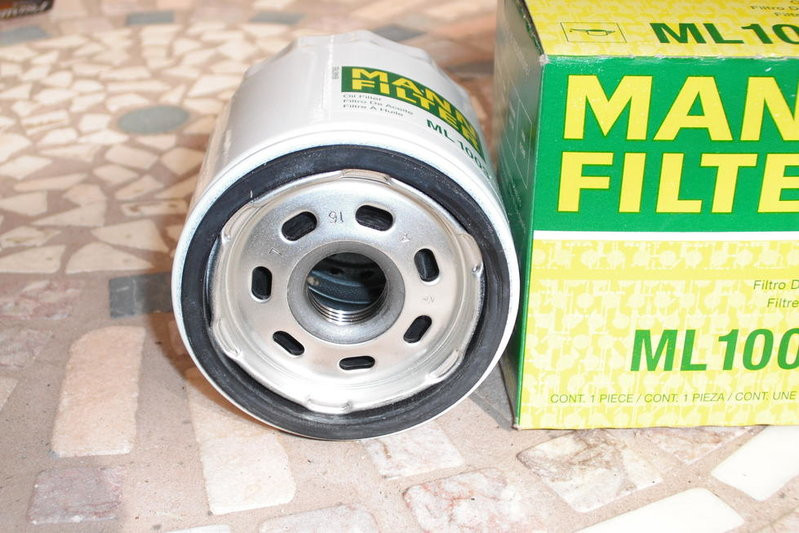 Internal components of the MANN ML 1003 oil filter, revealing construction details.
Internal components of the MANN ML 1003 oil filter, revealing construction details.
Upon disassembly, we noticed black residue on the filter end cap. The bypass valve is constructed from cardboard and exhibited a poor seal, with visible light gaps. This could allow unfiltered oil to bypass the filter media. Additionally, the paper filter media itself showed signs of degradation, easily falling apart when lightly rubbed.
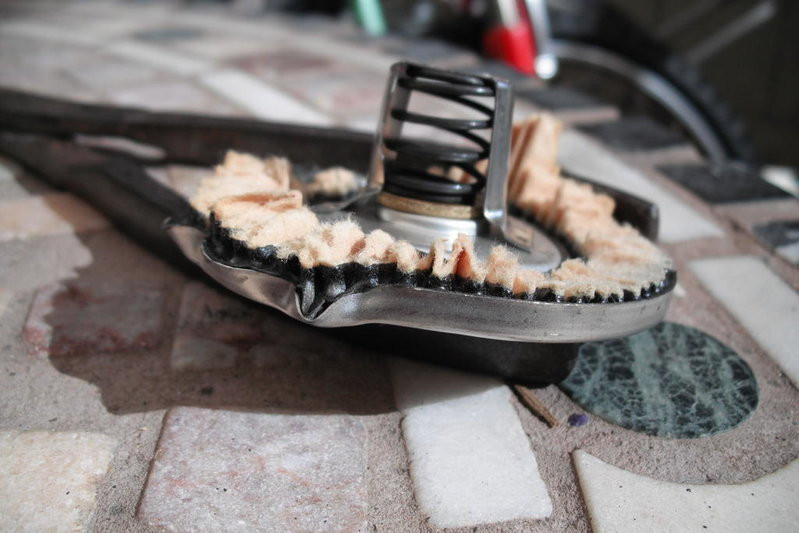 Close-up of the MANN ML 1003 filter media, showing its paper construction and potential fragility.
Close-up of the MANN ML 1003 filter media, showing its paper construction and potential fragility.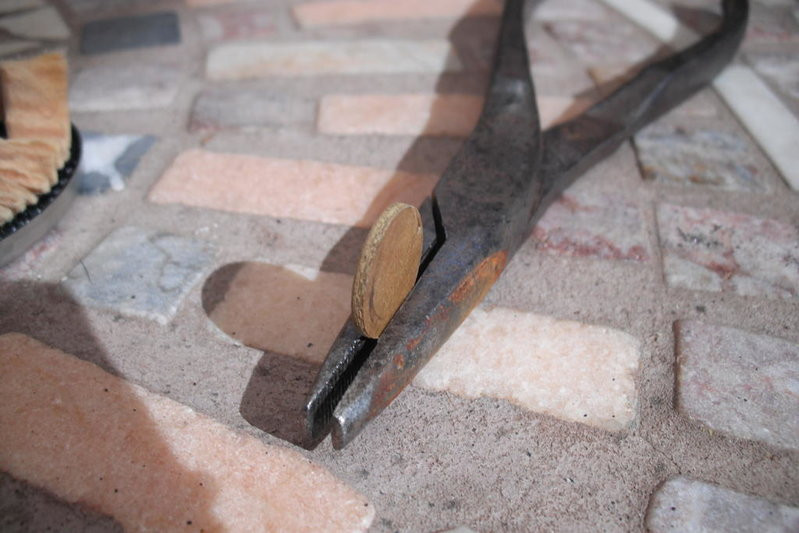 Bypass valve of the MANN ML 1003 filter, highlighting the cardboard construction and poor sealing.
Bypass valve of the MANN ML 1003 filter, highlighting the cardboard construction and poor sealing. Center tube of the MANN ML 1003 filter, showing its design and build.
Center tube of the MANN ML 1003 filter, showing its design and build.
Purolator Oil Filter
The Purolator PL10241, priced at $5.79 and Made in the USA, is rated at 99.9% efficiency. The packaging boasts a 13-gram contaminant holding capacity, equating to “8 nails, 13 nuts, or 31 paper clips.” Purolator advertises “Micronic media,” but it appears to be standard paper media. It features a textured surface and provides 131.2 square inches of filter media. The bypass valve is a simple metal disc that doesn’t tightly seal against the top cap. The gasket is pre-lubed with a Teflon coating.
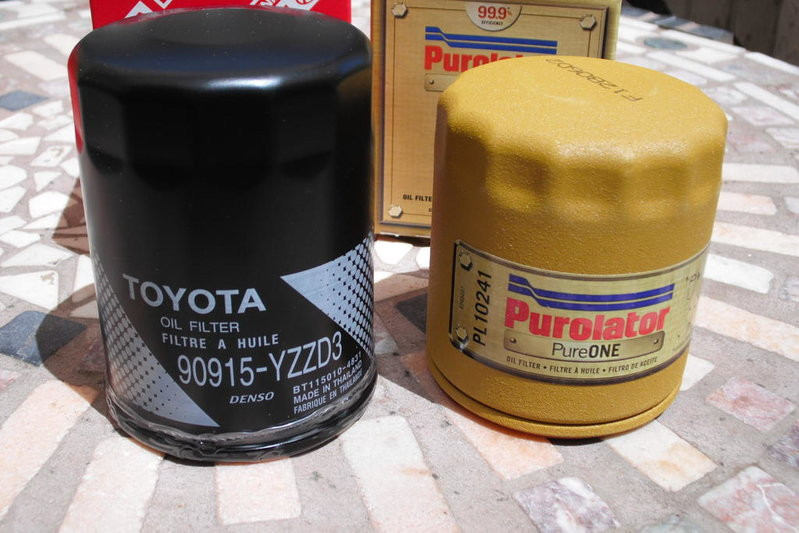 Purolator PL10241 oil filter next to a Toyota filter, showing size and design differences.
Purolator PL10241 oil filter next to a Toyota filter, showing size and design differences.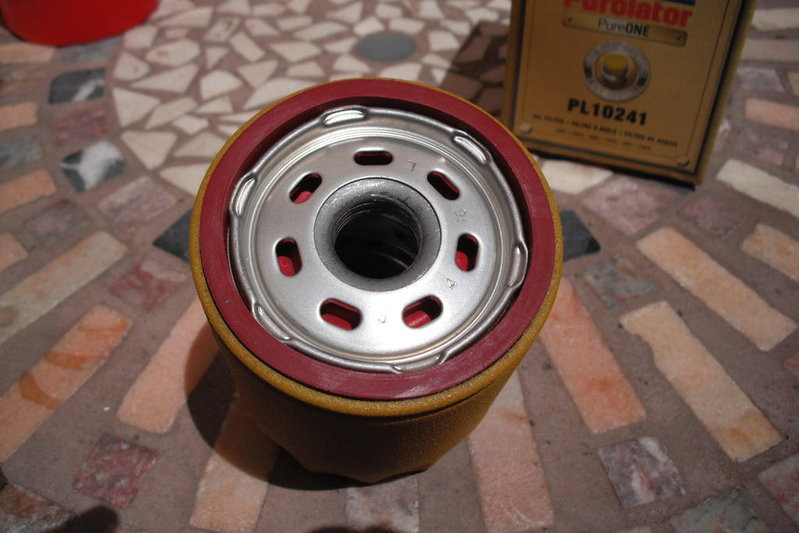 Components of the Purolator PL10241 oil filter, revealing internal construction and materials.
Components of the Purolator PL10241 oil filter, revealing internal construction and materials.
Wix Oil Filter
The Wix 51348, priced at $3.99 and Made in the USA, contains 115 square inches of paper filter media. Wix markets this as “Advanced” media. The bypass valve is well-designed and seals effectively. However, the Wix filter is significantly smaller than the Toyota OEM filter, with roughly half the filter media. Despite an overall height of 3.5″, the media itself only occupies 2″ inside the housing.
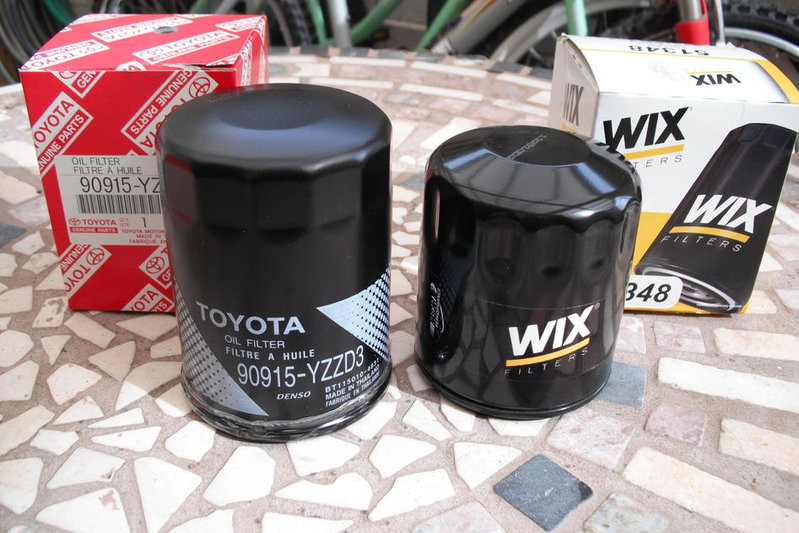 Comparison of Wix and other oil filters, highlighting size variations and designs.
Comparison of Wix and other oil filters, highlighting size variations and designs. Side-by-side view of Wix and other filters, emphasizing size and build differences.
Side-by-side view of Wix and other filters, emphasizing size and build differences.
Amsoil Ea15K51 Oil Filter
The Amsoil Ea15K51, priced at $14.95 and Made in the USA, is similar in design to the Wix filter. However, it uses synthetic filter media with a unique mesh backing. Surprisingly, it has the least filter media of the tested filters at only 66 square inches. Amsoil claims 98.7% efficiency at 15 microns and guarantees it for up to 15,000 miles. The anti-drain valve and housing share part numbers and manufacturer markings with Wix, suggesting they may be produced in the same factory.
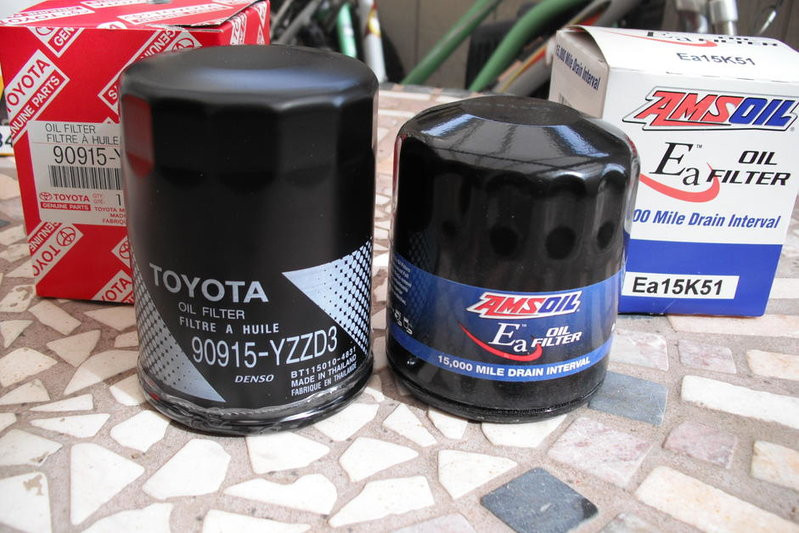 Amsoil Ea15K51 oil filter alongside other brands, showing size and construction.
Amsoil Ea15K51 oil filter alongside other brands, showing size and construction. Close-up of the Amsoil Ea15K51 filter media, highlighting the synthetic material and mesh backing.
Close-up of the Amsoil Ea15K51 filter media, highlighting the synthetic material and mesh backing.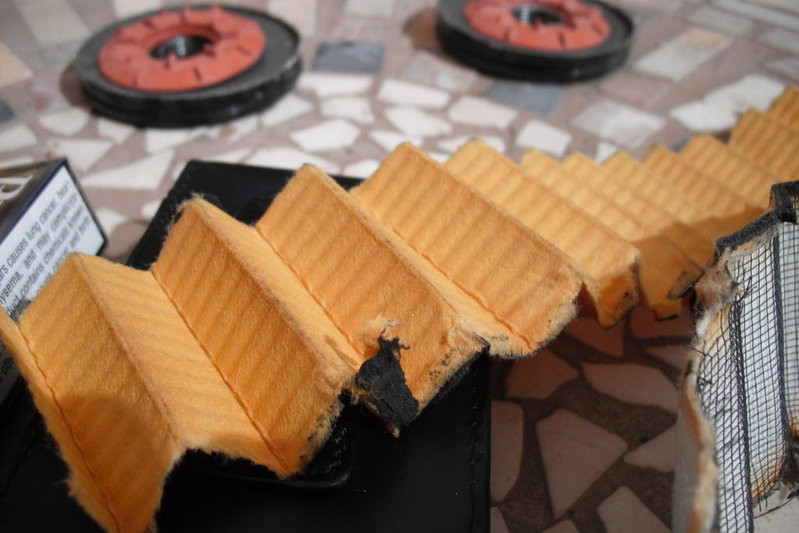 Amsoil and Wix oil filters compared side-by-side, showing similarities in design.
Amsoil and Wix oil filters compared side-by-side, showing similarities in design.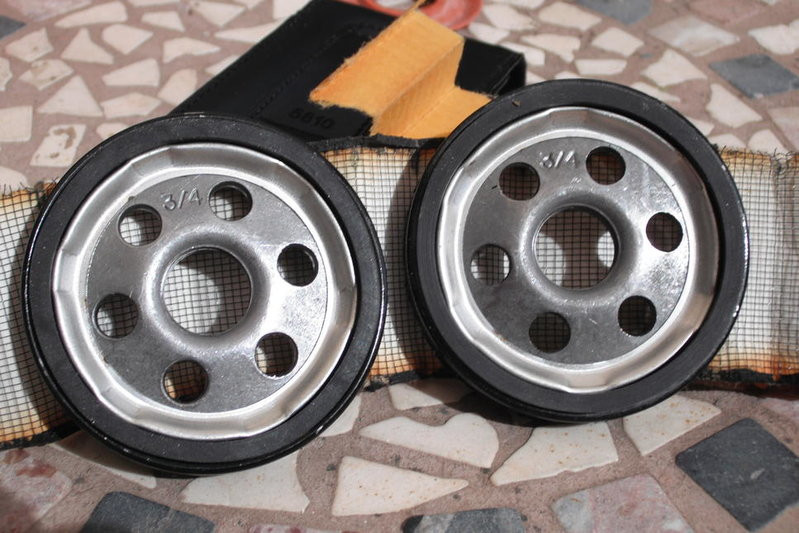 Base plates of Wix and Amsoil oil filters, revealing shared part numbers and manufacturer.
Base plates of Wix and Amsoil oil filters, revealing shared part numbers and manufacturer.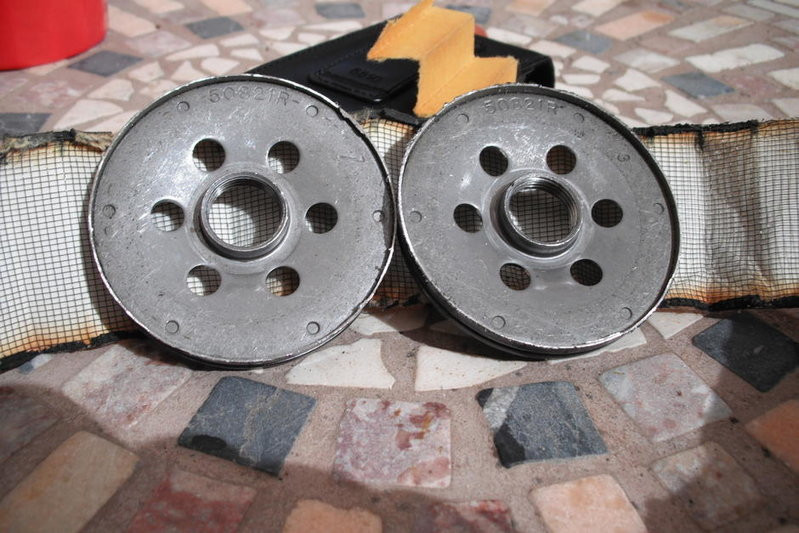 Further comparison of Wix and Amsoil base plates, emphasizing identical markings.
Further comparison of Wix and Amsoil base plates, emphasizing identical markings.
Royal Purple Oil Filter
The Royal Purple 10-2835, priced at $14.95 and Made in the USA, has the least filter media for an OEM replacement application in our test, with only 56.25 square inches. Despite this, Royal Purple claims extended oil change intervals up to 12,000 miles, supported by 100% synthetic media and a wire mesh backing. They also boast a “High-performance” anti-drain back valve (in a signature purple color) and an “Ultra Strength” filter housing, which we can confirm was exceptionally difficult to disassemble. Construction is similar to the Amsoil filter, but without shared part numbers. Like the Amsoil and Wix, it’s smaller than the Toyota OEM filter.
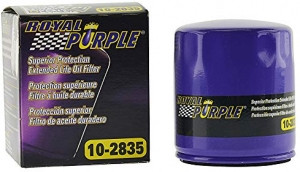 Royal Purple oil filter packaging and product shot, highlighting the brand's premium image.
Royal Purple oil filter packaging and product shot, highlighting the brand's premium image.
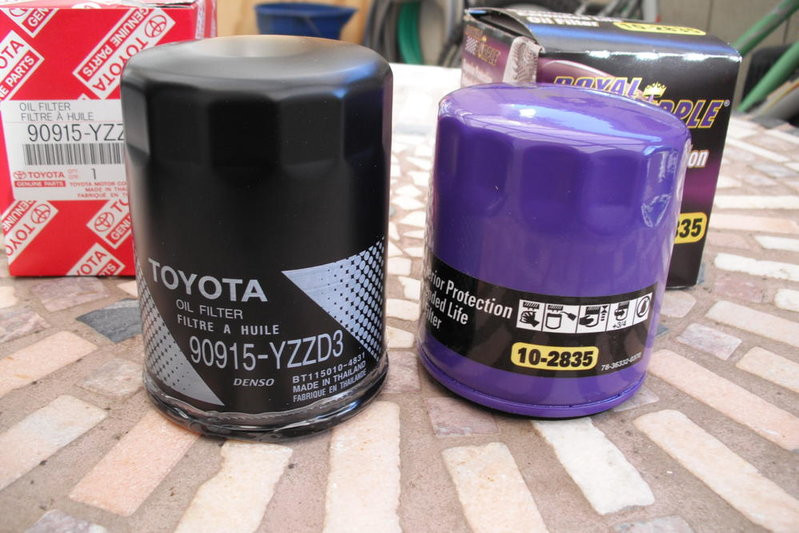 Royal Purple oil filter disassembled, showing internal parts and construction.
Royal Purple oil filter disassembled, showing internal parts and construction.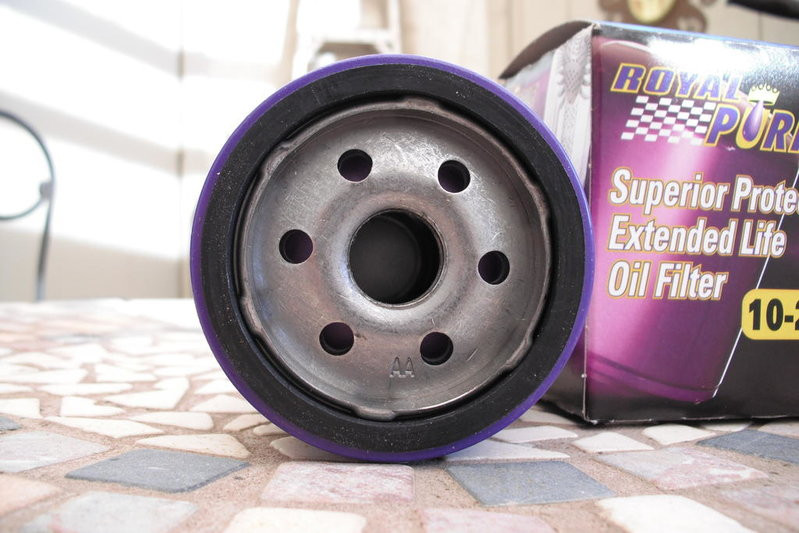 Royal Purple filter cut open, revealing the filter media and internal components.
Royal Purple filter cut open, revealing the filter media and internal components.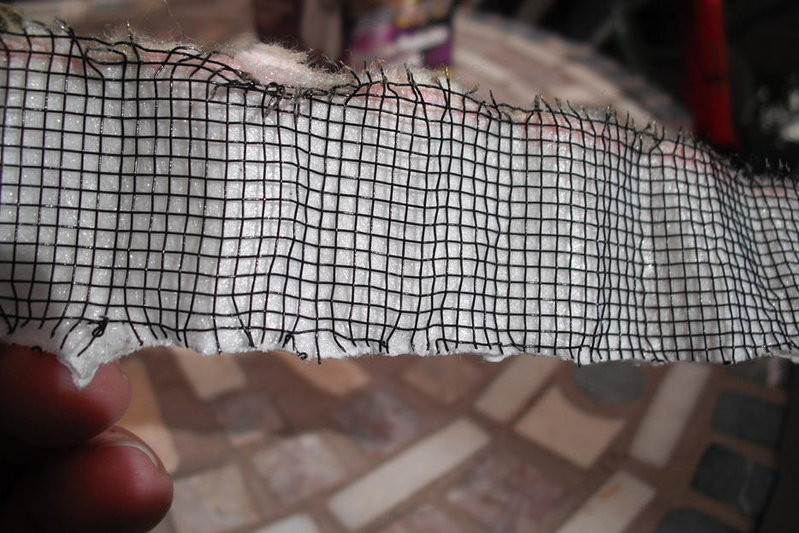 Close-up of the Royal Purple filter media, showing synthetic material and wire mesh backing.
Close-up of the Royal Purple filter media, showing synthetic material and wire mesh backing.
NAPA Gold and Mobil 1 (Oversized) Filters
Adding to our comparison, we included a NAPA Gold 1516 ($5.99) and a Mobil 1 M1-209 ($11.99), both oversized filters (+1 size up from OEM replacements).
The NAPA Gold 1516 has 210 square inches of paper/cardboard filter media. It features a unique “all-in-one” anti-drain valve.
The Mobil 1 M1-209, despite claiming “Synthetic Fiber Blend” media, appears very similar to the NAPA Gold’s media but offers less at 171.5 square inches. Disassembly revealed dents and flaws in the filter canister, and exceptionally strong adhesive used in construction.
Conclusion: Toyota Oil Filter – A Solid Value
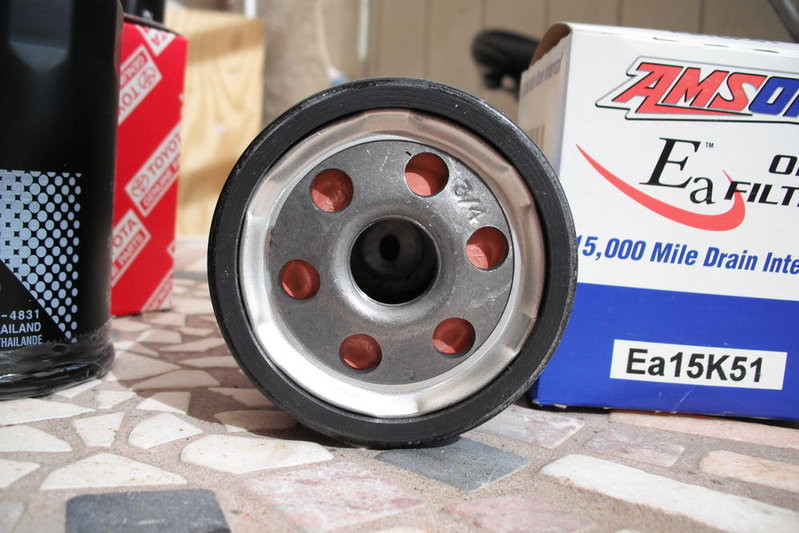 Group of various oil filters tested, providing a visual overview of the brands and types compared.
Group of various oil filters tested, providing a visual overview of the brands and types compared.
After dissecting and comparing these oil filters, the genuine Toyota oil filter emerges as a surprisingly strong contender, especially considering its price point. It consistently offers a large amount of filter media, often exceeding more expensive aftermarket options. While some premium filters boast synthetic media or enhanced construction, the Toyota filter provides excellent filtration area and solid build quality for everyday use. For Toyota owners seeking reliable engine protection without breaking the bank, the OEM Toyota oil filter is a smart and valuable choice. While oversized or premium filters might offer marginal improvements, the Toyota filter strikes a great balance between performance and cost-effectiveness, making it hard to beat for routine maintenance.